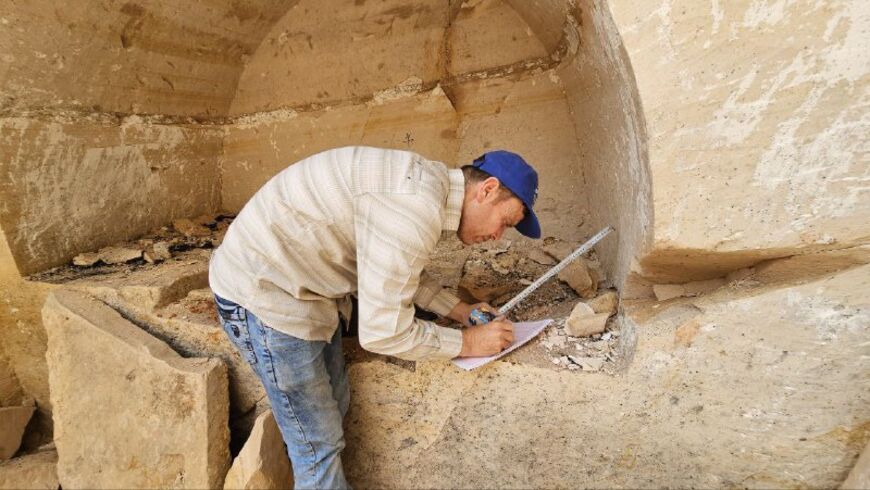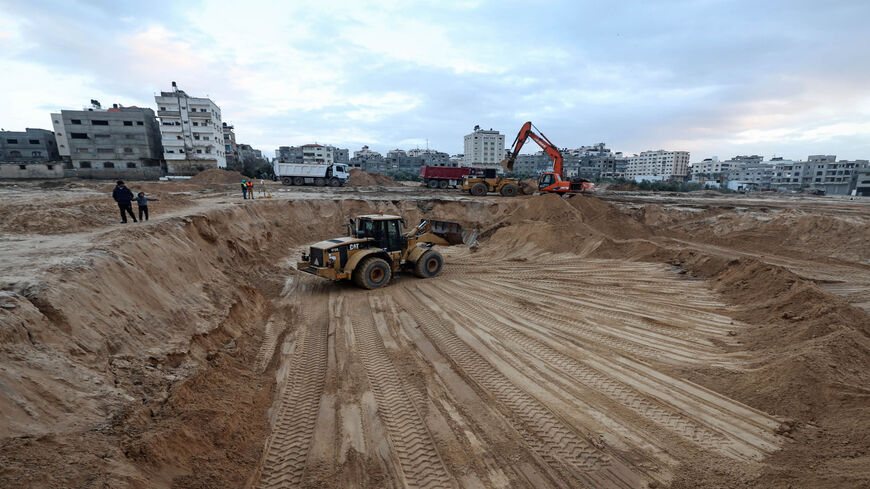What to know about 1,500-year-old Byzantine tomb uncovered in Syria
A contractor found a tomb complex dating back to the Byzantine Empire in Syria's Idlib province, just as many residents have started returning to their homes following the fall of Assad.

The remains of an underground Byzantine tomb complex believed to be 1,500 years old was discovered in northern Syria, highlighting the rich cultural heritage of the country that has suffered massive destruction during the 14-year civil war.
What happened: The discovery, confirmed by The Associated Press on Monday, was made on May 25 during reconstruction work in the town of Maarat al-Numan, in the northwestern province of Idlib. The town lies on the strategic M5 highway that connects Syria’s second city, Aleppo, to the capital, Damascus.
After rubble from a destroyed house was cleared, a construction contractor uncovered stone openings underground during excavation work. This prompted residents to notify the Idlib Directorate of Antiquities, which dispatched a team to inspect and secure the site.
The complex consists of two burial chambers, each containing six stone tombs. A cross engraved on one of the site’s columns suggests the temple dates back to the Byzantine era, according to Hassan al-Ismail, director of antiquities in Idlib, who was cited by the AP.
In a video published last month by the Syrian Asharq news outlet, human bones can be seen in one of the underground tombs.
أثناء الحفر لإنشاء مقهى... اكتشاف مدافن تعود للعهد البيزنطي في معرة النعمان
— الشرق للأخبار - سوريا (@AsharqNewsSYR) May 26, 2025
تصوير: أسعد الأسعد#الشرق #الشرق_سوريا pic.twitter.com/nmIGTWzVHp
Syria was once a province of the Byzantine Empire, which ruled from the fourth century AD until the fall of its capital, Constantinople — today’s Istanbul — to the Ottomans in the 15th century. The era was marked by the spread of Christianity.
The Syrian Ministry of Culture released a statement on May 27 expressing its “deep interest” in the discovery, which it said holds “historical and cultural value.”
Architectural details from the tomb complex. (Al-Jamahir)
The ministry added that it had dispatched an archaeological team to the site, which confirmed that it is indeed a tomb complex dating back to the Byzantine era.
The site was secured in coordination with security forces to prevent any vandalism or looting, according to the ministry.
The statement also affirmed the Ministry of Culture's “full commitment to protecting Syrian heritage in all its forms,” stating that “these antiquities represent a national memory for all Syrians and belong to the Syrian people. We are working to preserve them, after they were subjected to systematic destruction during the years of war waged by the ousted regime.”
Background: The Byzantine site was discovered in a residential area of Maarat al-Numan, where many residents have begun returning since the fall of President Bashar al-Assad in December, following a rebel offensive led by the Islamist Hayat Tahrir al-Sham group and years of displacement.
A worker takes measurement at the tomb complex. (Al-Jamahir)
In a 2020 report, Human Rights Watch accused Syrian and Russian forces of carrying out dozens of air and ground attacks on civilian infrastructure in Idlib and its towns, including Maarat al-Numan, which it said “may amount to crimes against humanity.”
Similarly, the Syrian Network for Human Rights noted in a 2020 report that Assad’s forces and their Russian allies conducted almost daily bombing operations in Maarat al-Numan during their 2019-2020 offensive.
“The SNHR identified numerous points of destruction in the city, totaling approximately 770 points in all, 15 of which were of completely destroyed buildings,” the report said at the time.
Know more: The Maarat al‑Numan Museum, which houses more than 2,000 square meters of mosaics — including church floors from the so-called Dead Cities, abandoned settlements in northwestern Syria dating back to Antiquity through the Byzantine era — suffered extensive damage due to repeated airstrikes and acts of vandalism.
Some 5,844 pieces from the museum’s total collection of 15,000 artifacts were looted, while many of its contents were partially destroyed in 2015 and 2016, according to a joint report published in 2020 by the Gerda Henkel Foundation and the Paris-based Syrian Society.
In his statements to the AP on Monday, Ismail said the recent discovery in Maarat al-Numan is another addition to the area’s many archaeological sites.
Idlib “has a third of the monuments of Syria, containing 800 archaeological sites in addition to an ancient city,” Ismail added.







